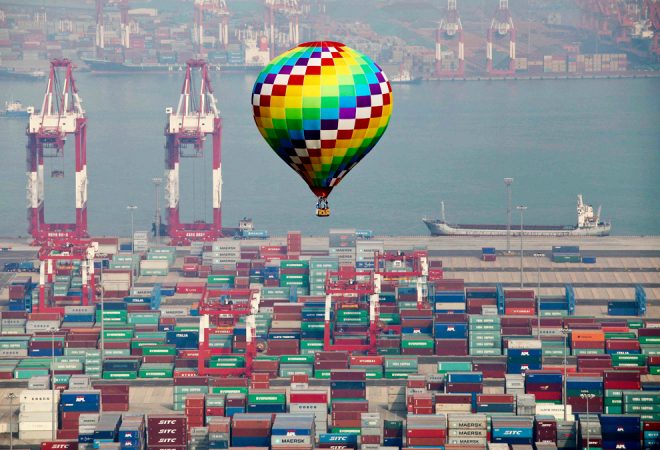Over the years we have gathered in our portfolio projects of all kinds — short and long-term, simple and complex, passing and very important. The project we want to commend today is not only a long-term, complex and very important one: usually when we begin to talk about it, we characterize it as “one of our coolest projects”, and we really mean it.

Everything began several years ago, when the customer — one of the largest companies in Europe specializing in automated printing — came to Novosibirsk to hold interviews with teams of potential companies-partners personally. As a result the customer decided to compose the kernel of the project team with Noveo developers.
The main project of the customer represents an online platform for designing and ordering any print production — from private invitations to corporate marketing materials. The solution stands out among other similar services for very strict quality control and significant economy on the delivery.
All advantages of the service can be illustrated with the example of a pressrun of a large company’s advertising booklets, intended for some event. Major advantages become evident in a real-life case when a large PR campaign is being launched requiring high-quality booklets at a certain event. The following preparation procedure is common in Europe: the company orders beforehand a batch of materials in 2 printing houses at once — to make sure that at least one of the batches will be ready on time. Then the customer receives these materials, checks that the materials are of a high quality and consistent across different batches, on the same equipment, and chooses for the event one of the batches, the most appropriate one. As a result costs for manufacturing and transport are twice as much as was necessary for delivery of high-quality marketing materials on time. Excessive printing results in a negative impact on the environment, skyrocketing CO2 emissions. With the project, we are working on companies already taking advantage of digital cloud printing, which aids with protecting the environment while spending less.
Our customer’s solution allows to avoid these wasted efforts. Not only is the printed production fabricated on the high-quality equipment - the company controls the materials’ quality; prior to their delivery a special software component — packager — verifies the materials conformance with the expected quality. When preparing a batch for shipping, a packaging specialist scans the barcode and answers a series of simple questions about the order making sure that the contents meet the customer's expectations and the quality meets highest standards, after which the batch can be packed and sent by a delivery service working in the region. The delivery is also maximally optimized: the company works together with a lot of printing houses, making our best to find the closest to the customer, so that the order comes to the destination point at the earliest time possible.
The company constantly widens geographical presence. At first it was one country, then step by step most of the European countries were engaged, and currently the company is enabling print houses to receive orders from the system in BRICS countries.
Being large scale and complex, the project consists of several sub-projects, and our area of responsibility is logistic: gathering orders information from different marketing platforms, the optimal distribution of orders among printing houses, delivery of orders to the customers. The software that we develop and support receives an order, estimates the order cost adjusted to local prices, tax rates and other charges, according to the legal requirements of the country where the service is provided; controls the status of the order processing, helps the packager, helps with tracking and much more than that! Of course, all this information is saved and processed, the owners of printing houses have an application that allows them to schedule the work, see planned amounts of orders coming in an hour, day, etc.
On an ongoing basis, they are provided with the information on the capabilities and capacities of a print house (printing machines and materials available) and get predictions on expected volumes of orders.

With the company’s growth, the logistic component inevitably becomes more and more complicated. Recently the team has been solving a lot of tasks related in particular to the growth. And if earlier we dealt with more or less consistently organized processes in Europe, now we constantly run into the local specifics. Why, for example, does the post delivery to some Chili regions stall? Because they are considered dangerous, and the post services don’t want to go there! Why does delivery time in China increase? Because they have their own bureaucratic procedures there, which should be respected volens-nolens. In China they also don’t have Amazon, and we have to find alternative servers. These and lots of other local particularities should not only be considered — they should be dealt with. Is it more difficult? Yes, but more challenging and interesting at the same time!
The project is interesting not only from the cross-cultural point of view. The latest technologies, innovative solutions, contemporary methodologies — it’s all about this project! Among essential requirements to new developers, there are high motivation and capability to learn everything new quickly. It sounds stereotypic, but particularly for this project those are very valued skills indeed, and not only standard lines in a CV. Here it is needed to work hard, think sharply and master all kinds of technologies. Those selected developers who were lucky to join the team say that one month of work on this project equals a couple of years of working on some standard systems. And judging by their own professional progress, it’s unlikely that they exaggerate!
The team is worth a special mentioning: it is multinational and distributed among several countries. The team kernel is here in Novosibirsk, and there are small offices in Petersburg, Kiev and Tallinn. Geographical distribution of the team as well as of the company’s services leads to the fact that communication and development is going almost 24 hours a day. And what else can you do, if something goes wrong, for example, in Chile, which has 12 hours difference with Novosibirsk?
It is solved by maximal optimization of communication processes. For example, the team uses to the fullest the corporate messenger Slack. It allows to unload yourself of as much of routine, automated tasks as possible: from automatic reminders to the bot answering typical questions like “What does our today’s release consist of?” By the way, releases are effectuated every 2 weeks, because the project strictly follows continuous delivery practice.
Regular business trips of the whole team to Oslo or Tallinn also contribute to the optimal communications as well as possible. The modern communication tools surely make the remote communication almost indistinguishable from the real one, but there is still a difference. And when the whole team including the customer meets regularly to work hard, it holds together not worse than a team-building :)
If we try to characterize the project in one word, we would choose the epithet “inspiring”. Yes, it’s a challenging project, yes, it requires a lot of time and efforts, but it’s interesting and perspective! We are very glad that several years ago the customer decided in our favour, and we hope that our joy is mutual!